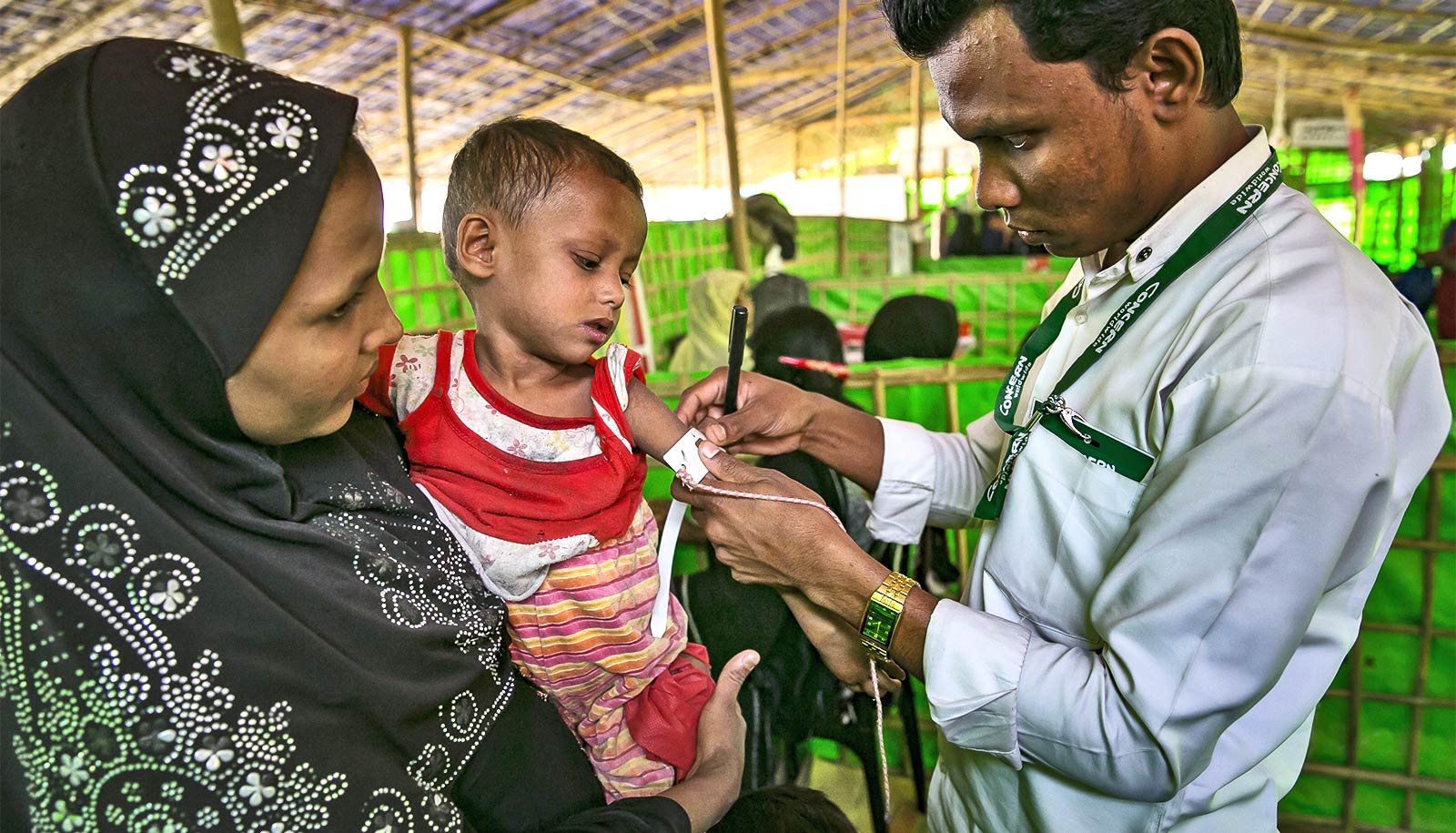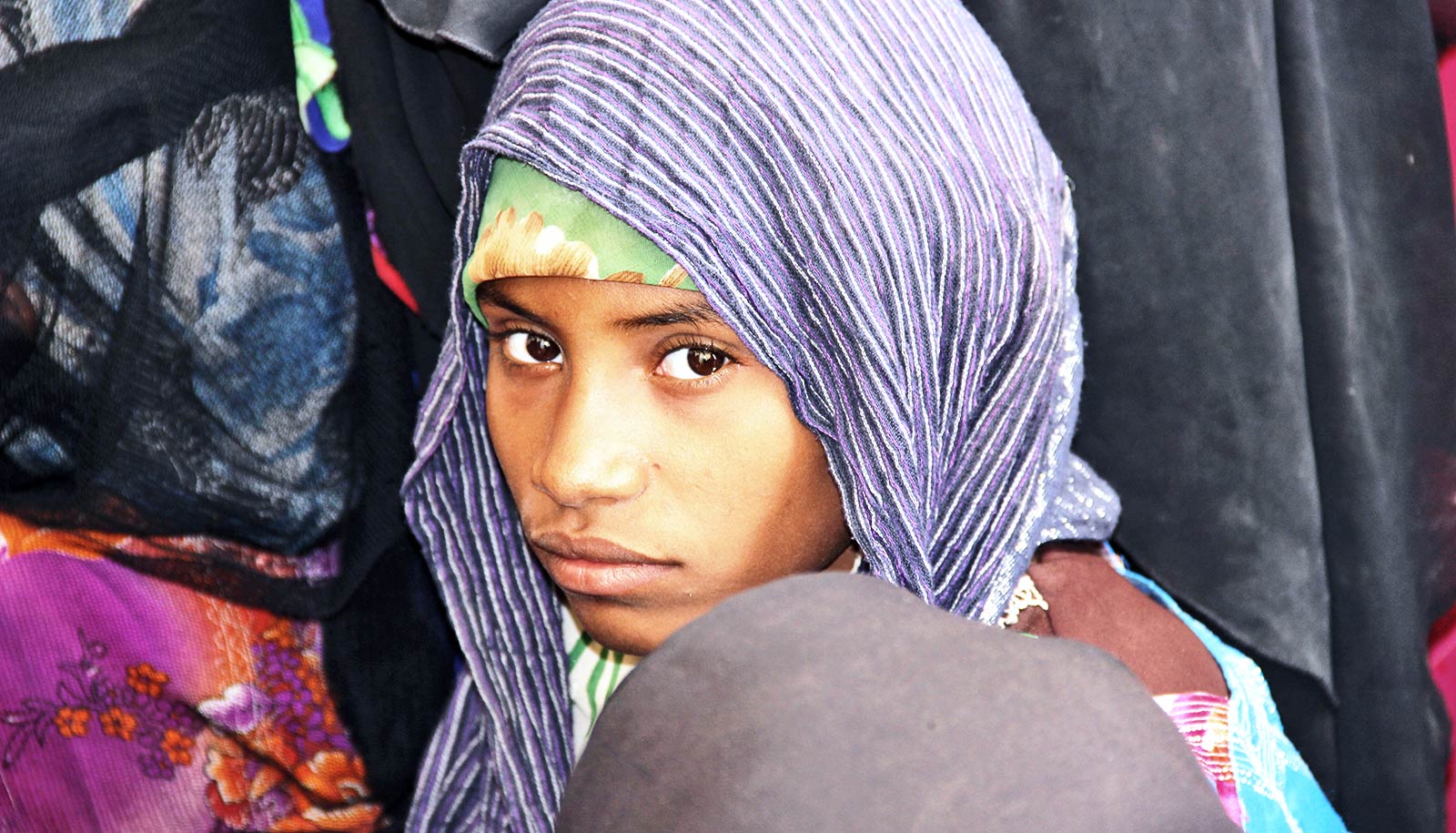Early life malnutrition, which is associated with increased risk of disease, impaired cognition, and death, occurs earlier than expected, according to a series of studies.
The trio of studies published in the journal Nature (study 1, study 2, study 3) focuses on what scientists refer to in children as stunting, meaning they are short for their age; and wasting, meaning that they weigh too little for their height. Stunting indicates chronic malnutrition while wasting measures acute malnutrition. The global health community uses both indications to monitor progress toward ending malnutrition.
“Children who experience early growth faltering before six months old are much more likely to die…”
The studies, the largest, most comprehensive look yet at growth faltering trajectories within the first two years of life, underscore the devastating reality for the millions of children living in the Global South, particularly South Asia. Two of the papers focus on the incidence of stunting and wasting, while the third addresses the causes and consequences of these problems.
“By bringing together data from 33 major studies, we found that children who experience early growth faltering before six months old are much more likely to die, and much more likely to have severe forms of growth faltering, by the time they’re 18–24 months old,” says Benjamin Arnold, associate professor at the University of California, San Francisco’s Francis I. Proctor Foundation and senior author of the papers.
“The early onset of growth faltering implies a very early window for intervention, in particular the prenatal period, and potentially broader interventions that help to improve nutrition among women of child bearing age.”
Arnold, an infectious disease epidemiologist and biostatistician, helped lead the research while at the University of California, Berkeley, in conjunction with the Center for Targeted Machine Learning and Causal Inference (CTML).
Malnutrition stunting and wasting
In 2022, nearly 150 million children worldwide—upwards of 22%—failed to get enough calories to grow normally, while more than 45 million, or about 7%, showed signs of wasting from malnutrition.
Current estimates attribute more than 250,000 deaths a year to stunting and more than a million annually to wasting. People who experienced stunting and wasting in childhood may also experience worse cognitive development, which translates into worse economic outcomes as adults.
To conduct the analyses, an international team of more than 100 researchers examined data involving nearly 84,000 children in their first two years of life from more than 30 studies initiated between 1987 and 2014. The cohorts came from 15 countries in South Asia, Sub-Saharan Africa, Latin America, and Eastern Europe.
While the effects of malnutrition are seen throughout lower resource settings, the burden of growth faltering is most stark in South Asia, where 20% of children were stunted at birth and over 52% had experienced wasting by their second birthday, according to new estimates.
In examining the causes, the researchers observed large seasonal changes in wasting that coincided with rainfall; likely reflecting seasonal food insecurity in populations that rely on crops as their main source of nutrition.
In the South Asian cohorts, a child born in May was far more likely to be wasted than a child born in January, due primarily to seasonal food availability and the nutritional status of the mother during pregnancy.
“By virtue of when a child happens to be born, they could be set off on a completely different trajectory in terms of growth,” Arnold says. He notes that while public health efforts can modestly improve birth outcomes and childhood growth, no known health interventions have been able to correct the levels of seasonal deficits uncovered in this analysis.
Nutritional and health support before conception
While some children can catch up with improvements to their health and nutrition, the earlier onset of growth faltering highlighted by the authors suggests that public health interventions should expand their focus to include children under 6 months old and pregnant mothers.
Currently, most childhood nutritional interventions begin after about six months of age because they often include nutritional supplementation and public health programs don’t want to interfere with breastfeeding.
“Early life malnutrition sets a concerning course that can span generations.”
“Our findings suggest that if health interventions are not delivered before age six months, it is too late to prevent stunted growth for about a third of children in the populations represented in this study and as many as half of children in South Asia,” says Jade Benjamin-Chung, first author of one of the papers and an assistant professor at Stanford University. Benjamin-Chung helped lead the research as part of the division of epidemiology and biostatistics while she was at UC Berkeley.
The papers also highlight the need to provide nutritional and health support to women before conception, and to continue to help mothers through and beyond their pregnancies. In the studies, the researchers observed that if the mother is malnourished, she’s likely to give birth to a child who will repeat that cycle of malnutrition into the next generation.
“Early life malnutrition sets a concerning course that can span generations,” says Andrew Mertens, a research data analyst at CTML and lecturer at UC Berkeley and one of the papers’ first authors.
“Immediate interventions are essential, but we also need sustained investments in development and in public health and nutrition programs to break this cycle. Support during the first 1,000 days of life matters immensely for the individual and for society as a whole.”
The Bill & Melinda Gates Foundation and the National Institute of Allergy and Infectious Diseases funded the work.
Source: UC Berkeley

